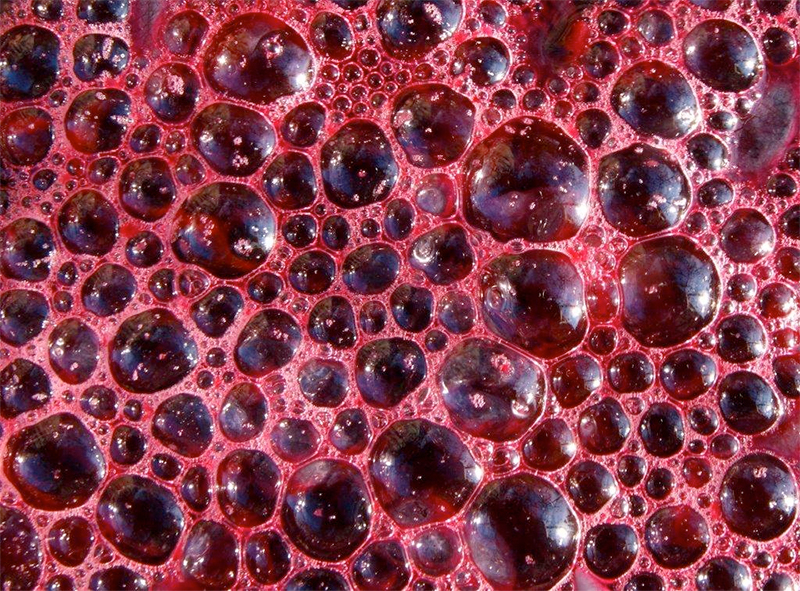This Wednesday marks the 273rd Thomas Jefferson’s birthday. You might know him as the third President of our fine nation, as the man who wrote the Declaration of Independence, and the inventor of the swivel chair. This founding father was also America’s first wine geek. Actually, we have him to thank for establishing a taste for fine wine in this country. Today we share some of the more interesting facts surrounding his passion for wine.
As Foreign Minister to France, he spent three months wine tasting
Jefferson arrived in Paris in 1785 to begin his role as America’s Minister to France. Soon after he finagled an official three-month tour of southern France and Northern Italy, visiting Bordeaux, Burgundy, Rhone, and Piedmont. This voyage opened his eyes to the finer side of wine and ultimately shaped his palate as he became intimately familiar with centuries-old traditions involved in growing and making the unique wines of each region.
He was the first to establish direct-to-consumer
Jefferson was among the first to import good wine to the states, but he did so very carefully and in a letter to a friend he warned, “Don’t go to the middleman”. That’s because shady middlemen and thirsty sailors often helped themselves to the cask of wine as it made its way across the Atlantic, topping it off water before it arrived. Nobody likes a watery Burgundy, and Jefferson was not about to let himself get ripped off, so after negotiating a purchase direct from the producer he’d insist on having it bottled for safekeeping during transport. Bottling wine at the time was not a common practice and added to the expense, but it helped keep the wine safe for years to come.
“We could, in the United States, make as great a variety of wines as are made in Europe, not exactly of the same kinds, but doubtless as good.”

Jefferson implored sellers to bottle wine he purchased instead of shipping it in casks. Photo via Society for Historical Archaeology
He recognized quality, age-worthy wine
Most Americans consumed very young wine, and didn’t think about letting it age. Jefferson was amazed to learn how old some of the French wines he tried were, and how they improved over time. During his trip to Burgundy he noted “Chambertin, Voujeau and Veaune are strongest” – an observation that remains true today. Naturally he started sourcing these quality, age worthy wines. His favorites included Sauternes and Madeira, which he used to toast to the Declaration of Independence. He also favored Hermitage, Rhone, Bordeaux, Burgundy and Rhine.

Jefferson was amazed that some of the French wines he tried were decades old. Photo: Adam Woolfitt/Corbis
He wanted import taxes kept low
Keeping taxes low makes sense when you’re importing great amounts of wine, but Jefferson also had a higher aim. He believed “No nation is drunken where wine is cheap; and none sober, where the dearness of wine substitutes ardent spirits as the common beverage.” Basically he thought it was better for people to get drunk of a great Bordeaux than some cheap liquor.
He owned some very old Lafite
On December 5, 1985 at Christie’s in London, the Forbes family paid $157,000 for what was the most expensive single bottle ever sold. It was touted as a rare bottle owned by Thomas Jefferson, with “1787 Lafitte” and “Th.J” etched into the glass. The level of the wine was “exceptionally high” for such an old bottle—just half an inch below the cork—and the color “remarkably deep for its age.” The wine’s value was listed as “inestimable.” We know Jefferson made several trips to Bordeaux, and bought bottles from Château Lafite, Château d’Yquem, Haut-Brion, and Branne-Mouton among others. Sadly it turns out the bottle was likely a fake, as confirmed by radiation tests.

CJ Walker/Courtesy of William Koch.
“My measure is a perfectly sober 3 or 4 glasses at dinner”
He planted vineyards, but never actually made a wine
Jefferson partnered with Philip Mazzei, an Italian vintner, and began planting vineyards at his Monticello estate. The venture didn’t fare well however. Most of the vines were destroyed by phylloxera and then the Revolution demanded most of his attention. They never produced a wine, but his dream lives on today at Jefferson Vineyards, located nearby at Mazzei’s former estate.

Located near the original Monticello estate, Jefferson Vineyards carries on the legacy that Thomas Jefferson began. Photo via Jefferson Vineyards
He recognized wine’s inherent health benefits
Jefferson offered plenty of anecdotes about wine’s abundant health effects, saying “Wine from long habit has become an indispensable for my health.” In an 1819 letter to his doctor he glamorized the heavy pour, writing, “I double however, the Doctor’s glass and a half of wine, and even treble it with a friend” – a friend being another glass presumably, as he elaborated in another letter, “My measure is a perfectly sober 3 or 4 glasses at dinner”. However, he was known for adding some water to his glass of wine. Still he lived long enough to draw certain conclusions about wine’s impact on his health, and records suggest his household consumed around 400 bottles per year.

So raise a glass, pour out a little Champagne, or just pop a nice Vougeot in memory of old Long Tom, the original American wino. Without his dedication to the cause, we might all still be drinking Scuppernong and singing God Save the Queen.
If you want to learn more about his history with wine check out Passions: The Wines and Travels of Thomas Jefferson which includes a detailed account of his travels in Europe and descriptions of nearly every wine Jefferson ever drank.
References
http://www.newyorker.com/magazine/2007/09/03/the-jefferson-bottles
http://www.monticello.org/site/research-and-collections/journey-through-france-and-italy-1787













